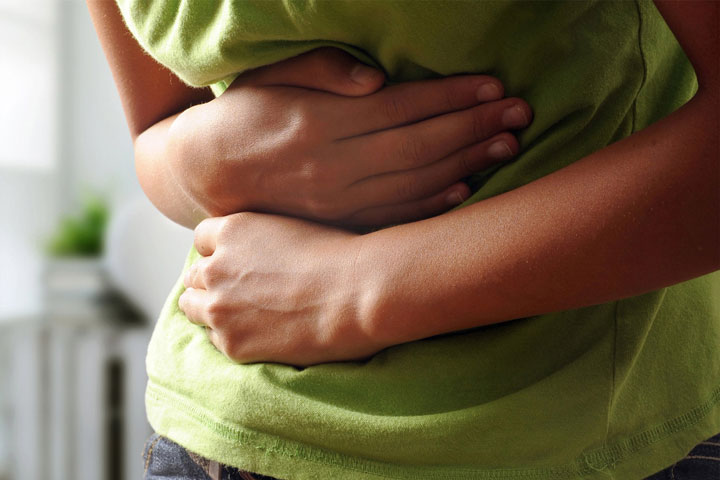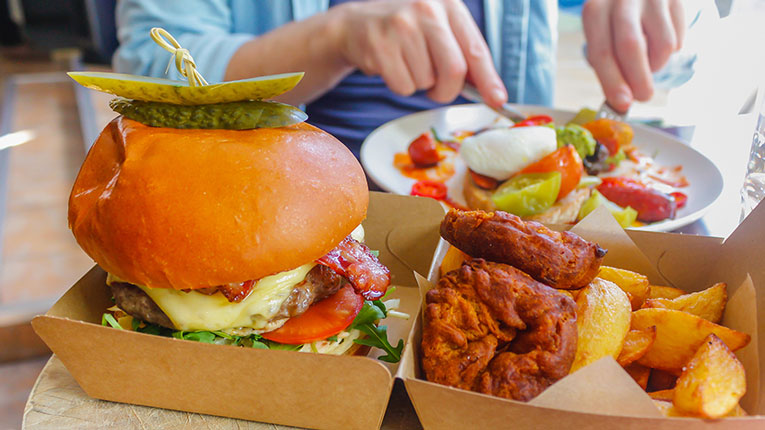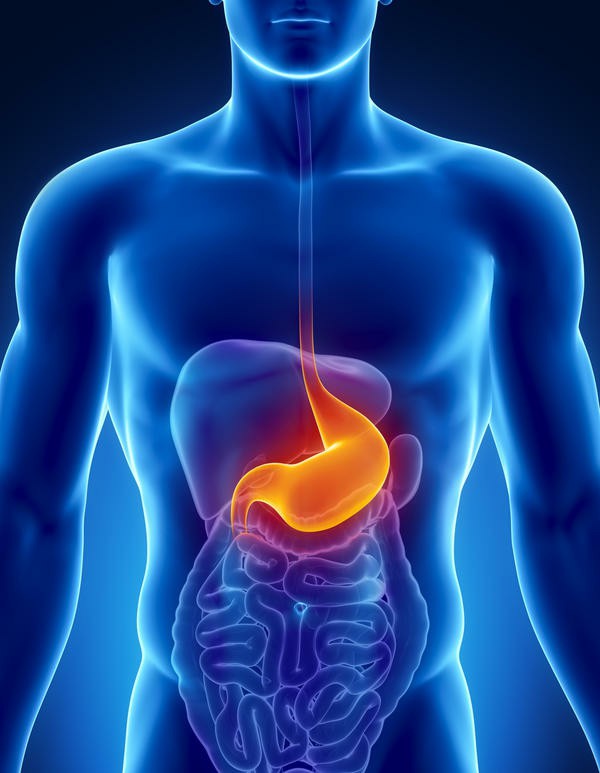WHAT IS POST-EATING PAIN?
Almost everyone has overindulged sometime causing indigestion, fullness, and nausea. If a normal amount of food also causes stomach pain it might be a sign of a problem.
Post-eating pain is also known as postprandial pain. Postprandial pain has many causes. If the pain occurs after eating and then goes away, it results from food. Postprandial pain and discomfort could show an extensive range of gastrointestinal conditions.
The pain is described from mild or sharp to severe including gripping, tightening, squeezing and radiating pain occurring in the upper abdomen, in the rib area. The pain is usually localized or widespread throughout the upper and lower abdomen.

WHAT MIGHT CAUSE POST-EATING PAIN?
There are numerous causes behind postprandial pain. Some causes might be simple and ordinary but others might be from underlying medical conditions. These might gradually develop in the stomach and lead to dangerous results.
Some of the major cause of post-eating pain are:
- Intolerance to specific food: Many people suffer from food sensitivity or food intolerance that might upset the stomach and instantly cause pain. The immune system is not able to recognize the wrong food entering the body. The most common types of food intolerance are sensitivity to milk or dairy products, gluten, peanuts, acidic food, berries, shellfish, and caffeine.
- Gas in the digestive tract: You might feel huge discomfort because of trapped gas in the digestive tract. Symptoms include bloating and uncomfortable pain that makes it harder to digest food. Certain types of food that cause this condition are beans, cabbage, and onions. Swallowing of air also leads to gas.
- Irritable Bowel Syndrome: This affects the digestive system, especially the intestine. It can be treated by changing eating habits as its symptoms last long. It can show following symptoms like cramping, bloating, diarrhea, or constipation and many more.
- Celiac Disease: This is described as a gluten protein intolerant condition. Gluten is present mostly in wheat, barley, and rye. This causes damage to the lining of the small intestine leading to signs of stomach upset and other severe complications.
- Pancreatitis (or Chronic Pancreatitis): The inflammation of the pancreas that worsens after eating, and radiates all over the abdomen area. The condition does not improve on its own and becomes a serious medical condition. Alcoholism directly aggravates the condition. If it is not treated it can permanently damage the pancreas, or cause diabetes and malnutrition.
- Dyspepsia: It occurs in the middle part of the upper abdomen causing irritation and pain. It is a condition with different symptoms such as bloating, burning sensation in the area, or nausea.
- Acid Reflux: It is also known as Gastroesophageal Reflux Disease (GERD). It is a chronic condition in which stomach acid moves through the esophagus more often, especially during and after eating. You might feel a burning sensation in your esophagus and can always taste acid in your throat or mouth. This condition should be treated else the acid might cause damage to the lining of the esophagus.
- Ulcers: Ulcers in the stomach might cause pain during eating. They develop in the inner lining of the stomach, causing a burning sensation. These ulcers get worse while you eat spicy food. These are mostly caused by certain bacteria in the stomach and lead to serious risky conditions like cancer if left untreated.
- Gallstones: These are small stones formed in the gallbladder, and cause sharp and unbearable pain. The pain might increase after consuming fatty food, however, some people feel it in the early morning even if they haven’t eaten. Depending on the pain and size of the stone, the doctor would either prescribe medications to melt the stones or remove it through surgery.
- Crohn’s Disease: This is a serious life-threatening condition. It is a severe, chronic inflammatory bowel disease causing inflammation in parts of the digestive tract. This could lead to other symptoms like severe pain, diarrhea, and bleeding.
- Constipation: It is caused when the stool moves through the digestive tract too slowly and is not normally eliminated. Chronic constipation with 3 or less bowel movements for several weeks causes pain and bloating of the abdomen. The symptoms might worsen if you eat when your body tries to digest new food.
Some medical causes for this sort of pain are serious like pancreatitis. So, complications depend on the condition itself. Not treating food allergies might lead to serious allergic reactions causing trouble in breathing or not treating ulcers causes bleeding and infections in the stomach. Hemorrhoids, anal fissures, fistulas, and even cancer, are some dangerous results of post-eating pain, if left untreated.

HOW TO DIAGNOSE THE CAUSE BEHIND THE POSTPRANDIAL PAIN?
Your doctor can determine the reason behind the pain after running a few tests such as a blood test, a fecal sampling, a CT scan, an endoscopy, an X-ray, or an MRI and asking you about the symptoms. Based on the results of the above tests the doctor would determine the cause behind post-eating pain.
HOW CAN POST-EATING PAIN BE TREATED?
Postprandial pain treatment depends on the diagnoses and the source of the pain. Some treatment methods are done individually like making some lifestyle changes, while others require more serious attention.
Home remedies: Home remedies are effective in treating pain if the cause of the pain is simple and not related to any medical condition. Diet change reduces pain triggered from food allergies and intolerance. This also prevents the pain from reoccurring. A lactose-free diet or gluten-free diet is the easiest way to end pain by lactose or gluten allergy. Many over-the-counter medications can be extremely beneficial to fix the acid reflux problem that many people suffer from.

Medications: Doctors would prescribe medications for underlying medical conditions. Each condition has its specific criteria requiring medicine to treat the underlying cause. Antibiotics provide relief in case of infection. Some of the common medications prescribed by the doctor are:
- Simethicone such as Gas-X- relieve uncomfortable bloating.
- Antacids such as Alka-Seltzer, Rolaids or Tums – neutralize stomach acid and reduce burning feelings.
- Acid-reducers such as Pepcid – reduce production of stomach acid for up to 12 hours.
- Beano – prevent gas.
- Antidiarrheals such as Imodium – stop diarrhea and associated symptoms.
- Lansoprazole and omeprazole such as Prevacid, Prilosec – block production of acid and heal the esophagus.
- Pepto-Bismol – coats the lining of the esophagus to reduce burning, treat nausea and diarrhea.
- Diphenhydramine such as Benadryl – fights symptoms associated with an allergic immune response and treats nausea and vomiting.
- Laxatives and stool softeners – Help relieve constipation and bloating.
- Acetaminophen such as Tylenol – relieves pain without irritating the stomach
- Probiotics – aid digestive health with more good bacteria into your system.
- Fiber supplements such as Metamucil, Benefiber – normalize bowel movements and prevent constipation, gas and bloating.
Surgery: Surgery is usually the last resort if the underlying medical condition is not treated through conventional or non-invasive methods such as gallstones. Surgery is also advised when the pain is unbearable.
nerve-pain
OUTLOOK
When the pain starts feeling extremely weird and new, you should consult a healthcare specialist. Inflammation or obstruction might mean something dangerous is happening. Symptoms, other than severe pain, can include sudden weight loss, a swollen abdomen, high fever, and excessive vomiting.
If you or anyone you know is suffering from stomach pain, our expert providers at Specialty Care Clinics will take care of your health and help you recover.
Call us on (469) 545-9983 to book an telehealth appointment with our specialists.
